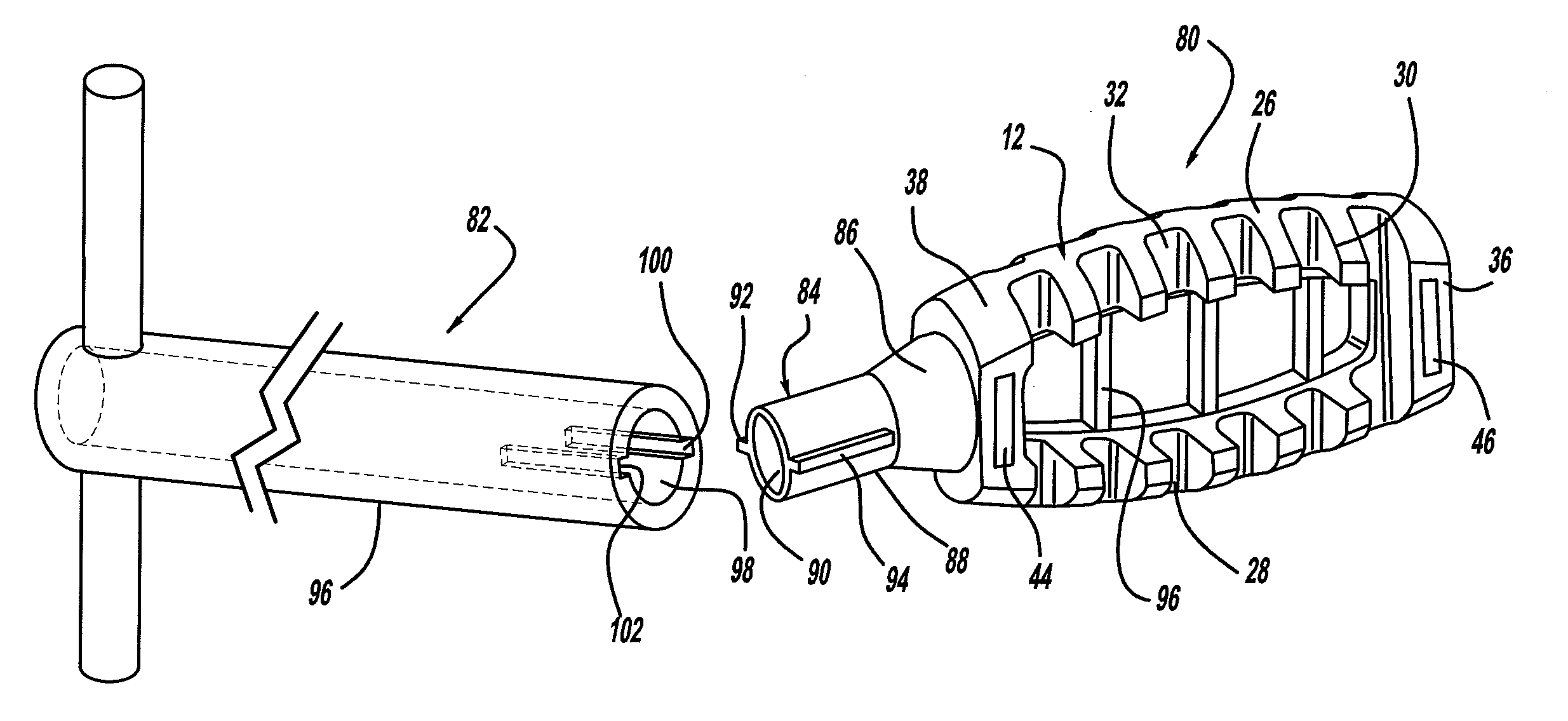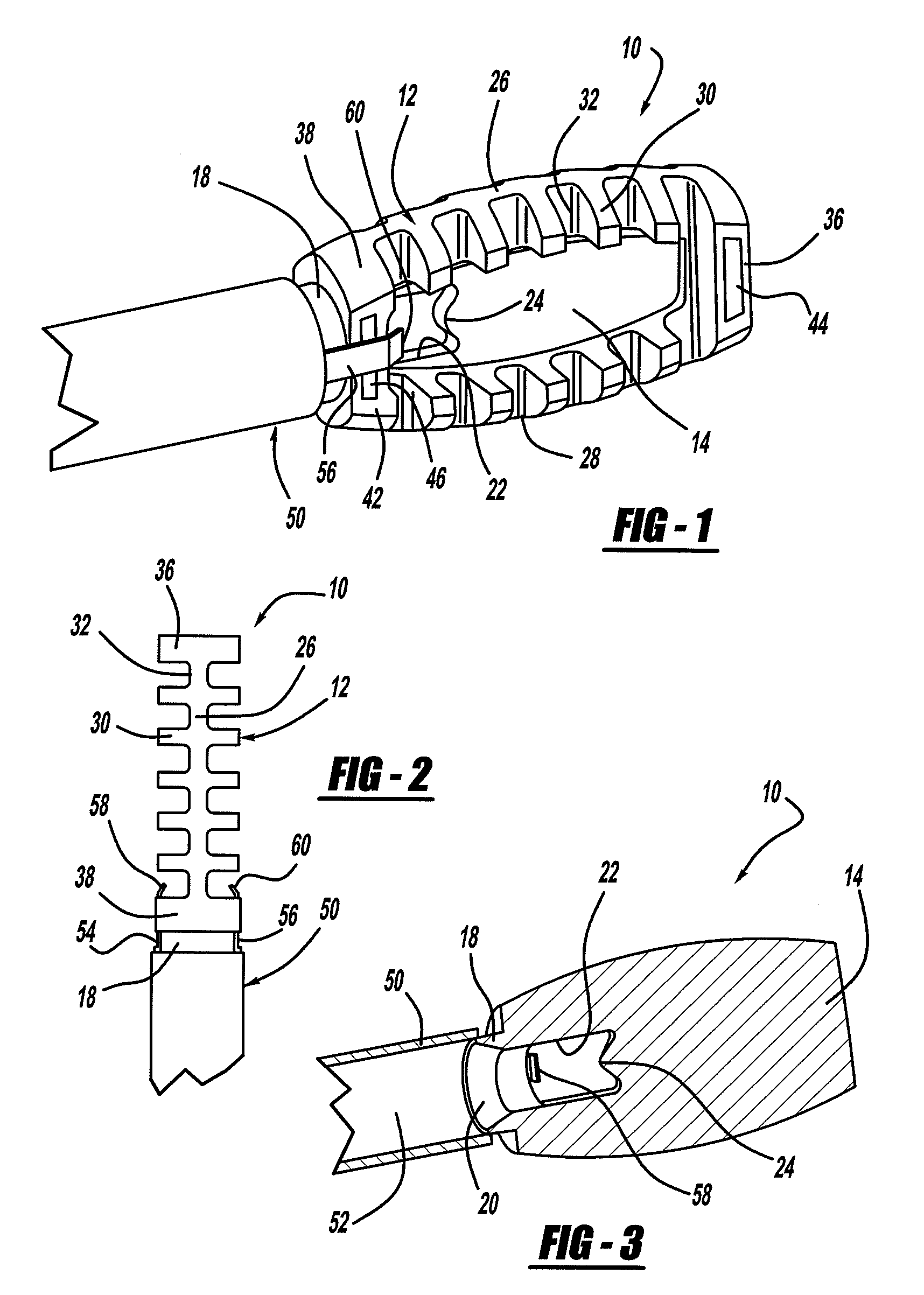Minimally Invasive Interbody Device
- Summary
- Abstract
- Description
- Claims
- Application Information
AI Technical Summary
Benefits of technology
Problems solved by technology
Method used
Image
Examples
Embodiment Construction
[0026]The following discussion of the embodiments of the invention directed to a minimally invasive interbody device for restoring the disc space height during spinal fusion surgery and allowing dispersion of bone graft material within the disc space is merely exemplary in nature, and is in no way intended to limit the invention or its applications or uses.
[0027]FIG. 1 is a perspective view, FIG. 2 is a top view and FIG. 3 is a cross-sectional view of a minimally invasive interbody device 10 that is to be positioned within the interbody disc space between two vertebral bodies once the disc has been removed as part of a spinal fusion surgical procedure. As will be discussed in detail below, the device 10 operates to restore the disc space height that has been lost by age or damage and may be causing pain as a result of nerve pinching, as discussed above. Additionally, the device 10 facilitates the distribution of bone graft material within the disc space.
[0028]The interbody device 10...
PUM
 Login to View More
Login to View More Abstract
Description
Claims
Application Information
 Login to View More
Login to View More - R&D
- Intellectual Property
- Life Sciences
- Materials
- Tech Scout
- Unparalleled Data Quality
- Higher Quality Content
- 60% Fewer Hallucinations
Browse by: Latest US Patents, China's latest patents, Technical Efficacy Thesaurus, Application Domain, Technology Topic, Popular Technical Reports.
© 2025 PatSnap. All rights reserved.Legal|Privacy policy|Modern Slavery Act Transparency Statement|Sitemap|About US| Contact US: help@patsnap.com



